Sedum ground cover: varieties, planting and care
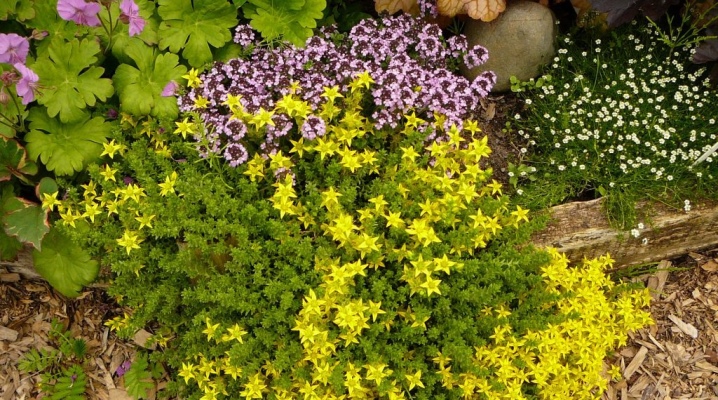
A fashionable trend in landscape design is the creation of alpine slides or the arrangement of stone gardens. The picturesque jumble of stones, densely overgrown with lush greenery, looks spectacular and pleases the eye. However, not everyone knows what plants to choose for planting on such exotic landscape elements. After all, they should be unpretentious and get along with any representatives of the plant world. These plants should set off the rough beauty of the stone, accentuate and decorate the garden, even in the cold season. Stonecrop, which is one of the most demanded plants for rock gardens, corresponds to these characteristics. It is worth taking a closer look at its features.
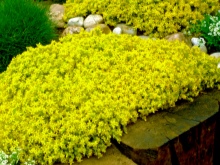
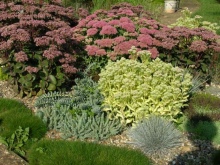

Description
From the point of view of botany, sedum (sedum) is a perennial low succulent. Its tangled twigs resemble a stunted shrub in many ways. The scientific name of the plant comes from the Latin sedare - "to pacify" or "sit". In the first case, the name is associated with the analgesic effect of stonecrop leaves. In the second - with its growth on the surface of the earth. The Russian version of "sedum" originated from the Ukrainian "purification", since the plant has long been used for problems with the intestines. Among the people, sedum has received several names. It is known as squeaky, hare, or hernial herb.
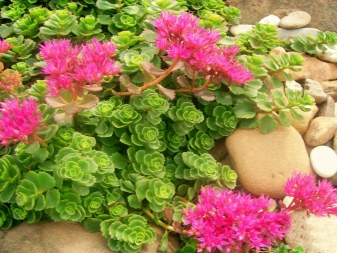
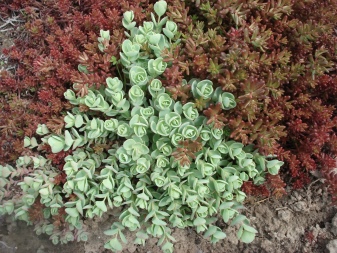
Its habitat is very wide. The sedum grows on the fields and dry slopes of four continents at once: Eurasia, Africa, North and South America. The sedum plant is recognized by the thick leaves that sit tightly on low, straight stems (up to 25 cm), creeping along the ground. The leaves can be arranged in an opposite or whorled (mosaic) manner. The color of the leaves depends on the illumination of the area. If the plant "settled" on a sunny slope, it will have bright red leaves. And if it "lives" in a dense shade, the leaves will be of the usual green color.

Cultivated winter-hardy plants are planted in flower beds and flower beds, they are used to decorate lawns and complement various design solutions. Heat-loving sedum species can be grown at home. In total, more than 600 types of ground cover sedum are distinguished. However, gardeners highlight only some of the available varieties that delight with their flowering all summer or all autumn.
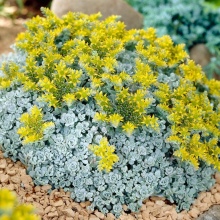
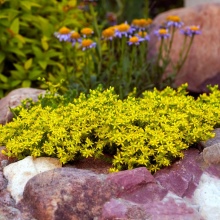
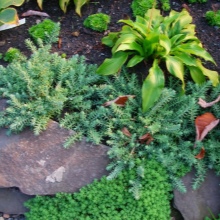
Varieties and types
There are two types of stonecrop: "Matrona" and "Linda Windsor"... The first has a high stem - up to 60 cm, and blue-green leaves with a reddish bloom. During the flowering period, sedum is covered with light pink flowers, which outwardly resemble St. John's wort. The second fell in love with gardeners for the dark red color of stems and leaves. The flowers of this plant are ruby-colored. This is a very unusual decoration for both a rock garden and a more familiar flower garden. These perennials are unpretentious to care for, they can withstand winter cold and summer drought equally well.
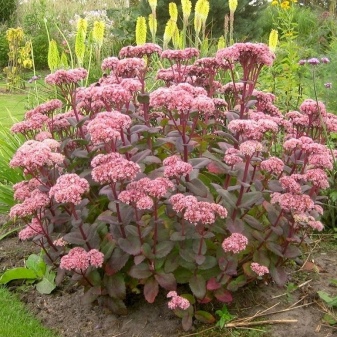
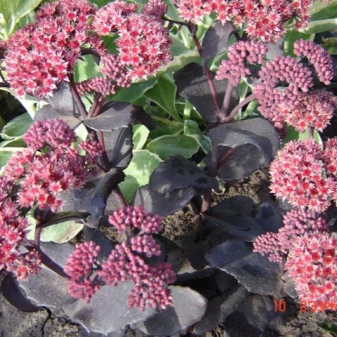
White sedum is considered one of the most aggressive species, since it instantly grows and literally captures the territory of the summer cottage.
This short plant reaches only 10-20 cm in height. Its leaves are green, but by autumn they acquire a beautiful red color. Small flowers are white or pink. Throughout the summer cottage season, this plant demonstrates an amazing change in color, which makes it indispensable for the embodiment of any design idea. Leaves Atropurpureum and Coral Carpet turn red with the onset of autumn days.
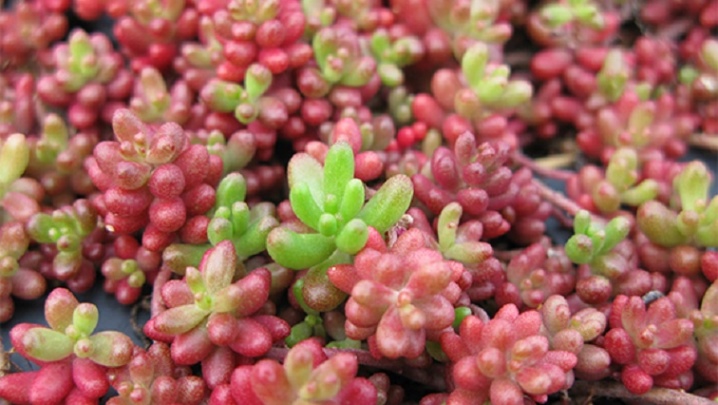
Leaves Murale also change color from bright green to reddish bronze. Each variety grows rapidly. The result is a dense carpet of leaves, and June or July flowers add lightness to any composition.
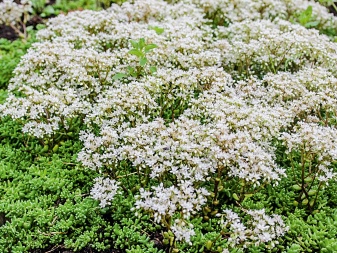
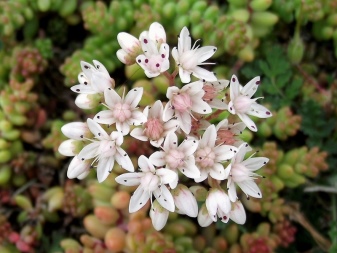
False sedum is distinguished by creeping or slightly raised shoots, the height of which does not exceed 20 cm. Thick leaves can be concave, in the form of a heart or in the form of wedges. Flowers of different varieties have their own color. Purpureum is purple, Fuldaglut and Schorbuser Blut are deep pink, Purpurteppich is deep red, Roseum is pale pink.
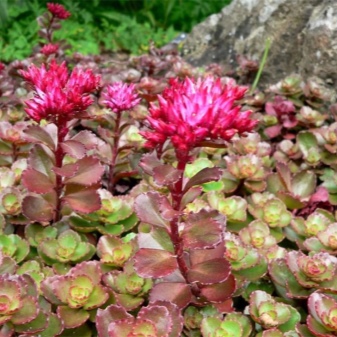

False sedum gets along well with any plants, but its color features make you choose your neighbors more carefully so that the composition looks organic. All varieties bloom in July or with the onset of August days, and each of them is characterized by luscious green leaves with purple or violet-red border around the edges.
In the fall, the foliage takes on a beautiful crimson hue.
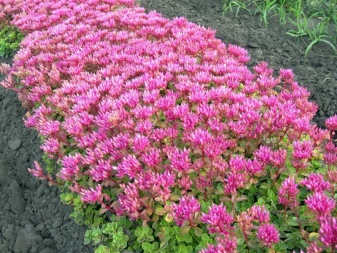
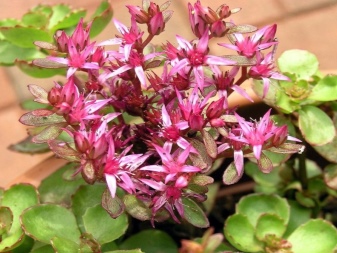
Sedum spatula got its name from its oily, scapular-shaped leaves. Small yellow flowers of this species delight with their appearance during the first two summer months. This type of sedum grows well, but grows slowly. It is also divided into several types. Cape blanco has a gray-white color. Purpureum differs in blue leaves with purple edging and a silvery bloom. They look interesting in combination with the bright flowers of the plants planted in the neighborhood. Both varieties do not tolerate cold and snowless winters. Therefore, in severe cold they should be wrapped in straw or hay.

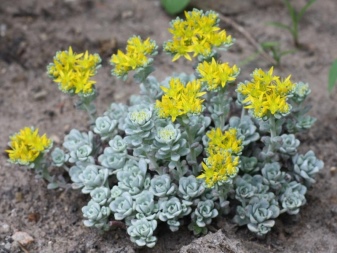
An interesting variety of stonecrop is caustic sedum. Its height is no more than 5-10 centimeters. But the yellow leaves of its varieties allow you to place interesting accents or create a play of contrasts. Moreover cultivar Aureum differs in small bright yellow leaves, and Yellow queen - lemon green. Lydian sedum has similar properties. Only the color of its leaves pleases the eye with pleasant greenery, which changes its color depending on the season.

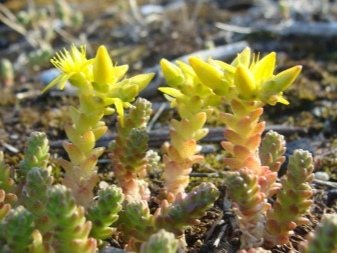
How to plant?
The planting time of stonecrop depends on the region in which the gardener lives. For example, in the southern regions of our country, this plant is planted around mid-September, before the onset of the first frost... This time is enough for the seedling to adapt, take root and grow quickly.
In the zone of risky farming, sedum is planted in open ground when the temperature stops dropping below 10-15 degrees. As a rule, favorable conditions occur in the last decade of May.
You should find a suitable place for planting stonecrop. It should be sunny or moderate partial shade. If you plant a plant in a densely shaded area, its stems will tend to light. The natural height of sedum will change markedly, which will negatively affect the decorative properties of the plant.
Immediately before planting, the soil should be dug up and organic fertilized should be applied.
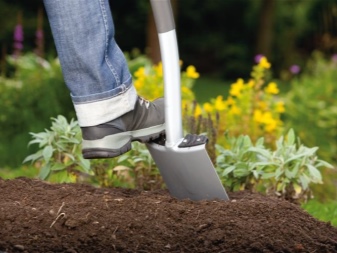
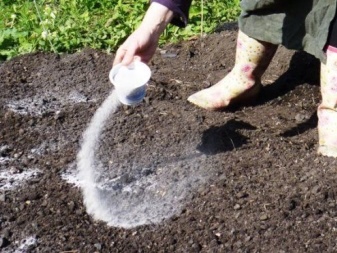
Then you need to make a small hole and pour it abundantly with warm, settled water. After that, succulent sprouts can be planted in the soil and sprinkled with soil. Immediately after planting, sedum is not watered. For the first time after planting, the plant should be "watered" only after a week. It is very easy to plant this unpretentious plant, and for the normal growth of the culture, it is necessary to provide it with full care.

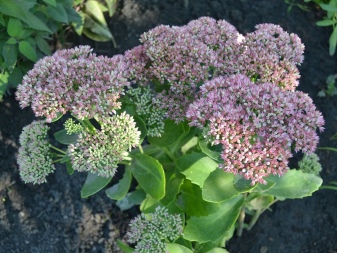
How to take care of it properly?
All varieties and types of stonecrops are unpretentious and resistant to any whims of the weather. It is enough for the gardener to follow a series of standard procedures for caring for garden plants. For example, they should be watered only in hot dry summers. At the same time, it is enough to simply moisten the soil - these plants do not like an excess of moisture. If cool rainy weather is established, stonecrops need not be watered at all.This will keep the roots from decaying.
Sedum is fed if they refuse to bloom in due time or the bushes are distinguished by sparse leaves. In the first case, fertilizing is applied, aimed at activating flowering, in the second - nitrogen fertilizers, which stimulate the growth of leaves. However, in most cases, sedums cope with both flowering and leaf growth on their own.
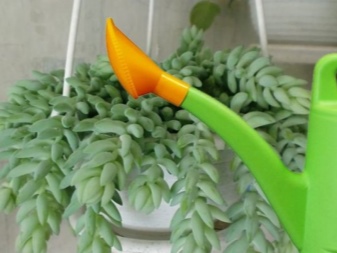
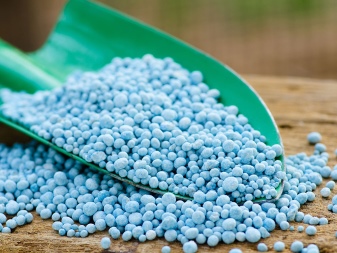
Another important point is pruning. This procedure is carried out if a heavily overgrown sedum has filled areas that were not intended for it. To trim the sedum, you need to take a knife or a sharp shovel, carefully dig out the excess stems, collect them in a bucket and take them away from the site.
It is important not to drop the dug out bushes somewhere on the path of the garden, because this "invader" takes root simply by catching on the soil.
Shortly before the first frost, the plant should be prepared for wintering. In the south of Russia, they are limited to pruning tall and dried shoots. In the northern regions, stonecrops are insulated with dry foliage or covering material (lutrasil is best suited for these purposes). And after that, stonecrop is laid with branches and left until spring.
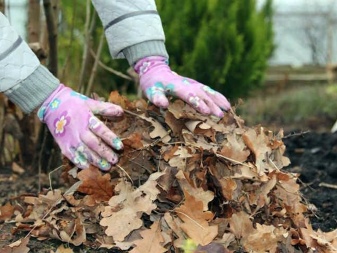

If sedum is introduced as a home plant, it will be useful for the owner to know a few nuances. For example, the pot with it should be placed on well-lit windowsills. Direct sunlight or bright diffused light is encouraged. The soil should be breathable, watering should be moderate. If the room is not hot, stonecrop can be watered only once a month. The transplant is carried out in the spring. Young plants are moved to a new pot every year, adults - every 5 years. Sedum should be fed only if absolutely necessary and cut if the plant has clearly lost its shape.
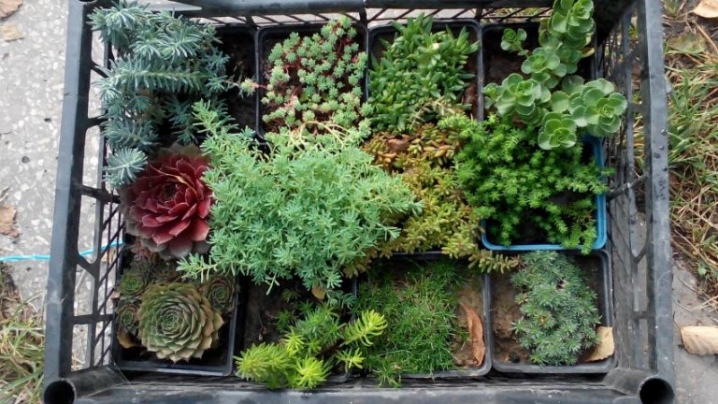
Reproduction methods
Garden and indoor sedum plants can be grown from seeds. But this is too troublesome method that requires compliance with a lot of conditions. Therefore, experienced gardeners are advised to propagate stonecrops by cuttings. This is done very simply. A strong and healthy plant is chosen as the mother specimen.
Parts of the shoots are separated from it, laid out on a tray, taken to the veranda, shaded and left to dry for 2-3 hours. After that, the seedling is planted in open ground (or in a flower pot). It is not necessary to water it after planting. If the plant is planted in a flower bed in rainy weather, it is worth sprinkling the cutting with wood ash so that it does not rot in wet soil.
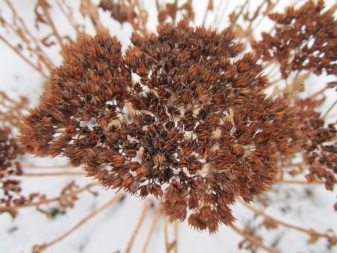
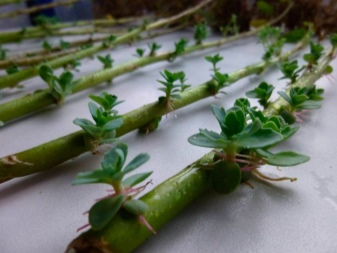
Diseases and pests
The sedum has strong immunity. As a rule, these plants get sick if the gardener violates the rules of care. For example, excessive watering in cold summer leads to the occurrence of fungal diseases... Getting rid of them is not easy, but real. To do this, the diseased parts of the plants are cut off with a sharp knife, and the cuts are sprinkled with wood ash. In advanced cases, you should use special disinfecting drugs.
If sedum fell in love with a spider mite, the plant should be treated with Aktellik. This tool will get rid of the pest in a short time. Similarly, they fight thrips and aphids. However, any problem is easier to prevent than to cure. Therefore, periodically it is worth spraying the leaves of stonecrop with a solution of laundry soap or tobacco infusion.
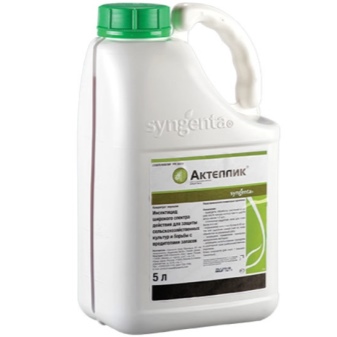
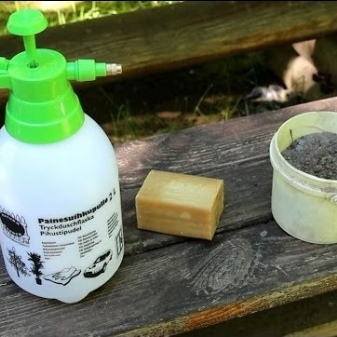
Types of sedum and caring for them in the video.






































































































The comment was sent successfully.